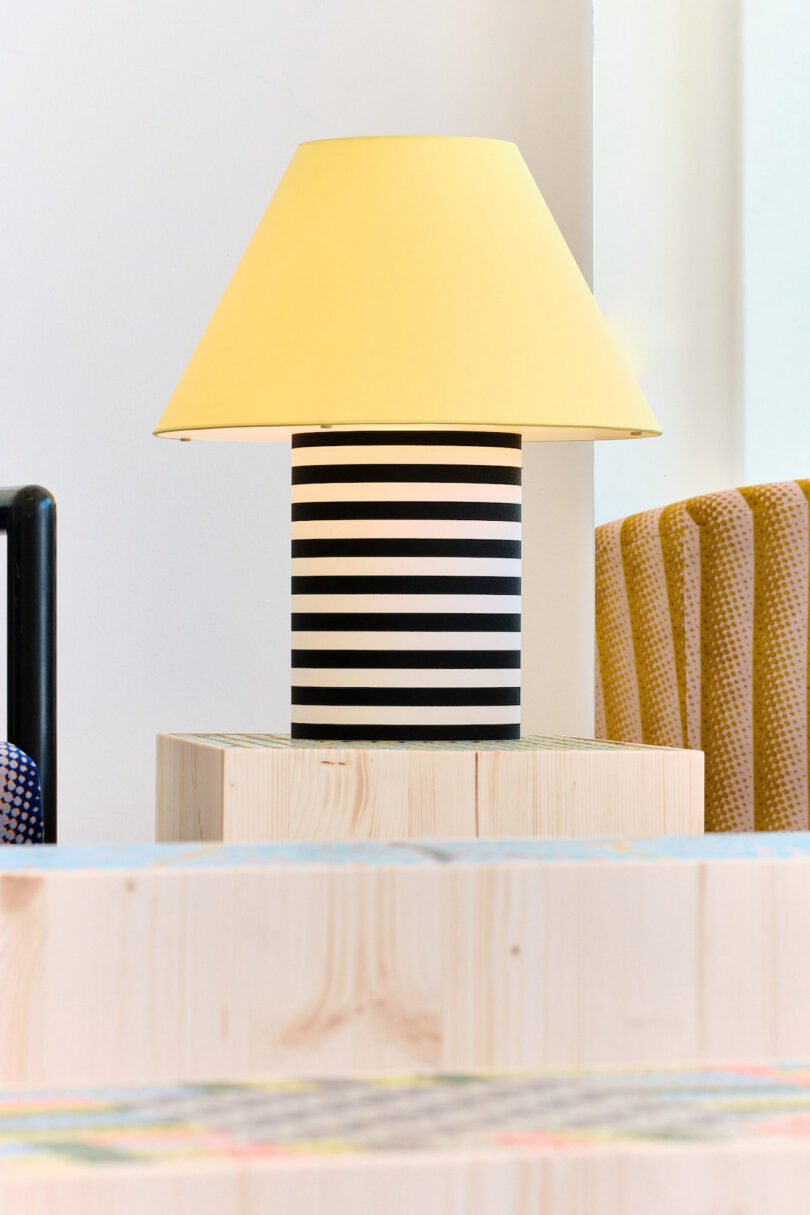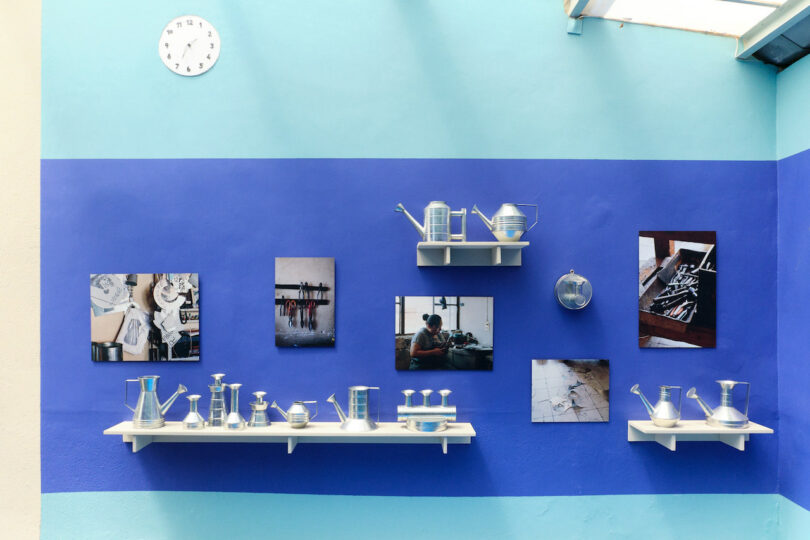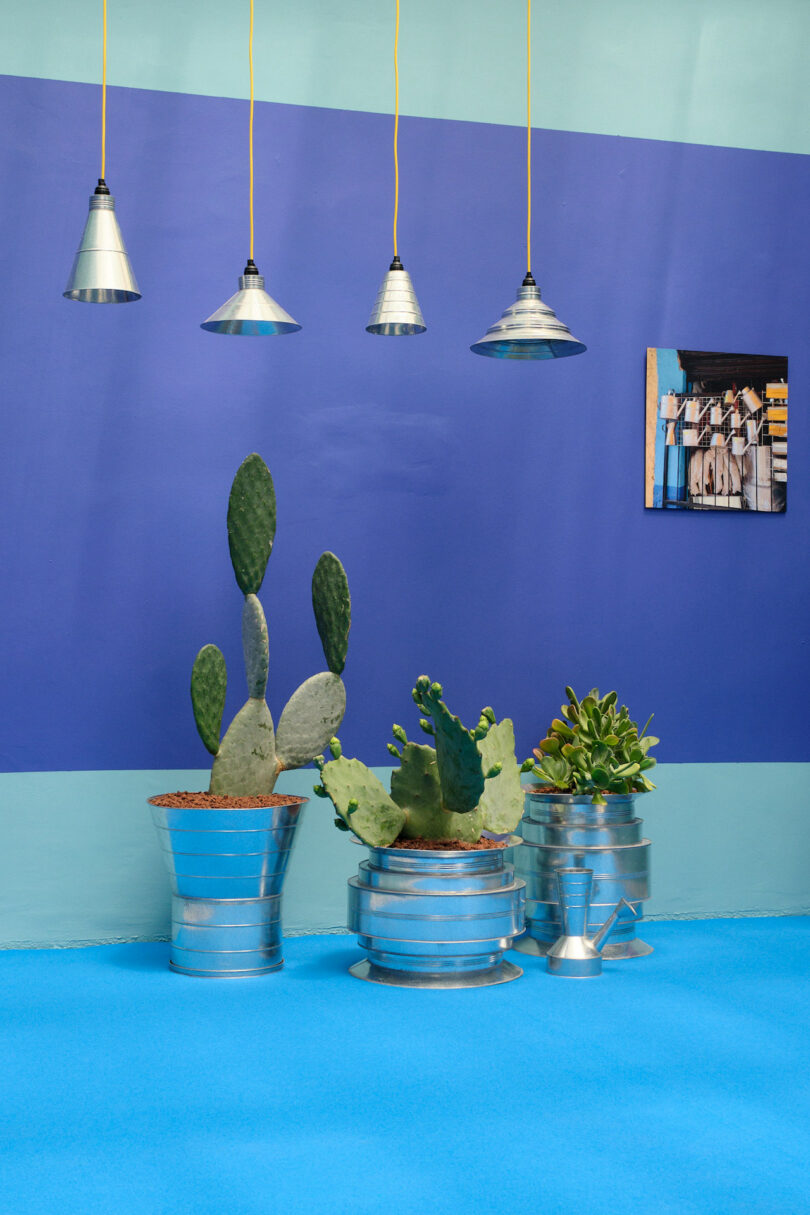
A Painting Today: “All the Fashion”
6 x 8″
oil on panel
sold
The artist Jacques (James) Tissot had an eye for beauty and fashion, the son of parents in the fashion and designer hats business. At a young age, he’d paint clothing in fine detail, a style surely influenced by what surrounded him. He also knew at a very young age he wanted to pursue a career in art.
Allow me to tell you about the woman in Tissot’s painting Mavourneen (Portrait of Kathleen Newton) – raised in England and Agra, India – her father rose from an Irish army officer to chief accountant for the East India Company, and worth mentioning, a strict Catholic. When she was 16, her father arranged for her to marry a surgeon in the Indian Civil Service – she embarks on a trip to her wedding on a ship, where the Captain became obsessed with her and gets his way once they arrived. She married the surgeon, hadn’t consummated the marriage yet – felt guilty – went to a Catholic priest for advice – he told her to fess up to her new husband – he was enraged – filed for divorce – ship Captain said he’d pay for her trip back to England but if, and only if, she was to be his mistress. She gets pregnant, refused to marry the Captain and ran off to live with her sister.
That’s where James Tissot comes in. They meet, he falls madly in love with her – she gives birth to another child said to be his – they live together in domestic bliss for a few years until she contracted tuberculosis. Tissot suffered through her illness, she couldn’t bear it all and overdosed on laudanum and died. Tissot was so distraught, he laid next to her coffin for four days. A true Greek tragedy.
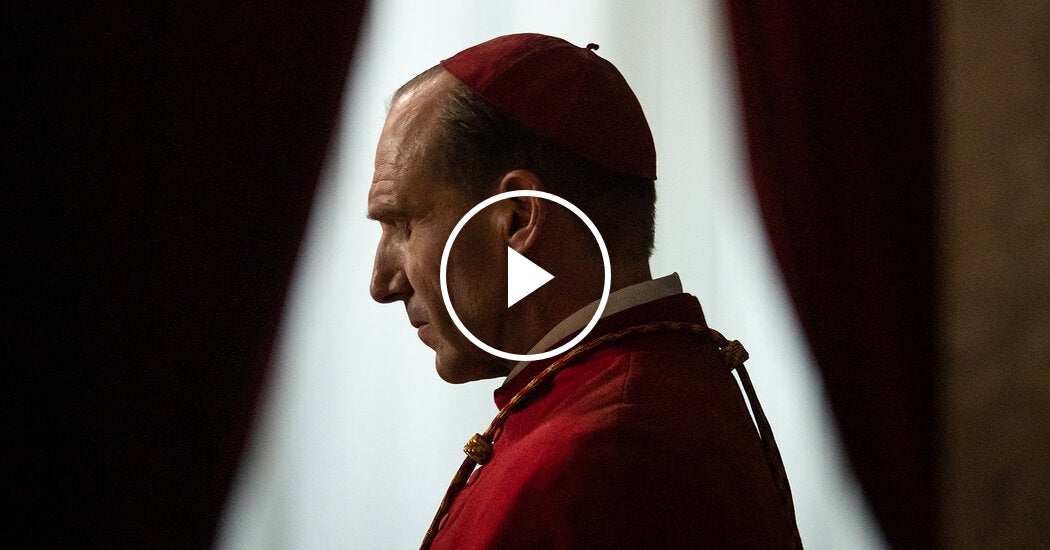
‘Conclave’ | Anatomy of a Scene
“Hi, My name is Edward Berger and I’m the director of the movie “Conclave.” So we’re about 30 minutes into the movie. We’ve set up the place as the Vatican and the Pope has died. And now Cardinal Lawrence, the character played by Ralph Fiennes, is the Dean of the College of Cardinals, meaning he has to organize the coming election of the new pope. And now it’s his big day because it’s the first day of the conclave, meaning all the doors are being shut. The cardinals are going away into the Sistine Chapel to vote for this next pope. And Ralph Fiennes gives the introductory speech, a homily. And we chose this piece of music at the very beginning. It’s actually the only music that isn’t composed. Everything else is composed in the movie. So it’s the only kind of source music sung by a choir. And it is the only piece of music that is played in the Sistine Chapel for hundreds of years. And I found this fact on a 6:00 AM morning tour. We went to the Sistine Chapel on a guided tour with and it was empty. It’s the only time that it’s empty. If you go at 6:00 AM and the guide told us that this was the piece of music. So I looked it up and found it and found it immensely moving and beautiful. So I decided to put it into the movie. So Ralph starts out the speech in Italian, and Ralph spent a long time practicing Italian, and he was actually very, very adamant. We always had a dialogue coach or someone like an Italian woman there who listened to his diction and everything. She was very satisfied of how he performed it because also he was super meticulous that it felt believable that he’s lived there for 25 years and has practiced Italian for 25 years. So we paid a lot of attention to that. But then at some point, something comes over him, a feeling. And he stops. And then he switches into his natural language, which is English. “But you know all that.” “Let me speak from the heart for a moment.” And delivers a speech about really his true feelings, and that is doubt. He expresses his doubt about his own faith, about his own purpose in the church, about the Church in general, about what he thinks the next pope should be like, someone who accepts doubt and gives in to doubt. And that intuitive speech, that giving into it raises a lot of eyebrows. In this scene, you will notice, we’re usually fairly wide on Ralph in the beginning when he speaks Italian. We’re from behind. We’re from a profile. And then as soon as he speaks from the heart, as soon as his speech changes, we go in for a close up, a very frontal central close up, and the camera starts moving. And then it’s actually just one shot. “Certainty is the great enemy of unity.” “Certainty is the deadly enemy of tolerance.” It’s just one shot, uninterrupted small push in on Ralph as he speaks and he loses himself within his words and he doesn’t notice anyone around him. And only then, once he’s finished. We cut to the reverse of a wide shot of all the cardinals listening. “If there was only certainty and no doubt, there would be no mystery and therefore no need for faith.” “Let us pray that God will grant us a pope who doubts.” The scene sets Ralph Fiennes up as a character to be reckoned with. He delivers the speech that comes from his heart and other Cardinals, especially the ones with ambition to become the next pope, suddenly fear that there’s a new contender in the room. And that is the climax of the scene.

rolls-royce reveals phantom goldfinger, inspired by its motor car in the 1964 james bond film
2024 phantom goldfinger by rolls-royce motor cars
Rolls-Royce Motor Cars introduces Phantom Goldfinger, the motor car that marks the 60th anniversary of the 1964 James Bond film. Its design cues take from the 1937 Phantom III Sedanca de Ville in the 007 movie, the one owned by the villain Auric Goldfinger, and the bespoke features of the car link back to the Goldfinger plot, from the complex sculptural gallery inspired by the scene filmed on the Furka Pass to the gold golf putter mounted to the inside of the car’s boot, which ties in with the club used by Auric Goldfinger during his first meeting with James Bond.
The interior shines in gold, and quite literally through the presence of the varying-carat material. The design team embeds a solid 18-carat gold bar, shaped as a miniature version of the car’s design. Gold finish brushes the base of the front and rear center consoles, and even the inside of the glovebox and the hidden vault created in the center console between the front seats. Gold for the air vents, gold for the organ stops throughout the motor car, gold finish for the speaker frets, and gold plates for the treadplates designed to look like gold bars that feature Goldfinger. There’s also a 24-carat gold-plated VIN plaque engraved with the vehicle ID number, which ends in 007.
all images courtesy of Rolls-Royce Motor Cars
719 glowing stars on the ceiling of the rolls-royce car’s interior
The Furka Pass references show up several times throughout the Rolls-Royce Phantom Goldfinger. The hand-drawn, 3D artwork installed in the gallery runs the full width of the front fascia, whose isoline map draws the contours of the Furkpa Pass road that’s seen in the James Bond film. The silver-like lining glimmers around the stainless steel that’s used to construct the base of the artwork, further darkened using a method called physical vapor deposition to bring out the stark lines of the Furka Pass illustration.
The motor car company says they engrave the contour line of the map onto the material to expose the bright metal underneath, thus revealing a gilded surface overall. Inside the motor car, the ceiling glistens as if there were stars at night, and in fact, the design team replicated the constellations positioned over the Furka Pass during the last day of filming the scene in Switzerland, July 11th, 1964. When the passengers look up at night, 719 ‘stars’ glow with a subtle glimmering hue, surrounded by eight ‘shooting stars’ that are all individually placed by hand.
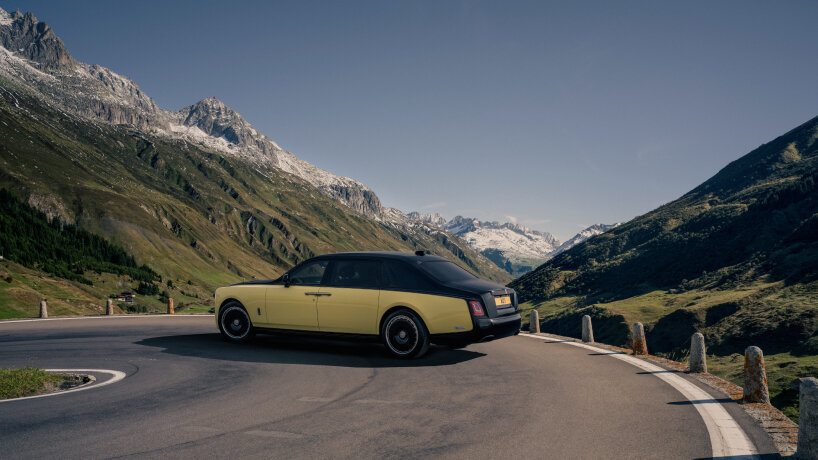
2024 Rolls-Royce Phantom Goldfinger along the Furka Pass, the place the 1964 movie was shot
1965 movie references for the 2024 phantom goldfinger
The 1965 James Bond movie references are almost endless. In the film, Agent 007’s first encounter with the Goldfinger occurs at Stoke Park in Buckinghamshire, UK, where James Bond challenges him to a round of golf, and he uses a gold putter that was guarded by his henchman, Oddjob. It’s the reason the gold putter in gold, a recollection of the scene, appears mounted on the underside of the Phantom Goldinfinger car’s boot lid. Rolls-Royce adorns it with an ‘AG’ monongram, inspired by the engraving on the signet ring worn by the villain on-screen.
Later in the movie, the agent places a Q Branch-issued tracking device on Goldinger’s Phantom III to monitor his whereabouts around Europe. Rolls-Royce doesn’t leave it behind as they develop a device inspired by the original gadget, and it subtly projects the 007 log onto the carpet of the boot floor whenever the user opens the lid. Then, during the Stoke Park Scene, James Bond is nearly caught interfering with the Phantom III by Oddjob, who loads Goldfinger’s golf clubs and a harlequin umbrella into the boot. Rolls-Royce then produces umbrellas finished in the same red, blue, green, and yellow colors, stashed in the 2024 Phantom Goldfinger’s rear doors.
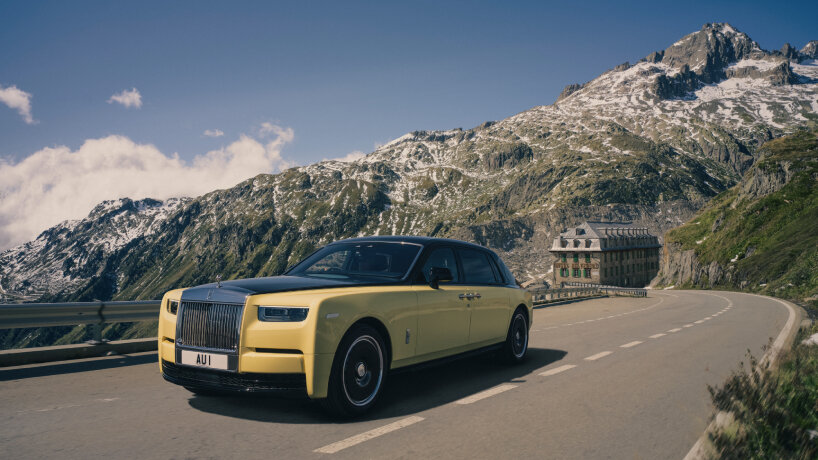
many of the motor car’s design cues take from the 1937 Phantom III Sedanca de Ville in the 007 movie
Outside the Rolls-Royce Phantom Goldfinger, the design team matches the yellow hue exterior to the original 1937 Phantom III Sedanca de Ville used in the film. The two-tone shade has a ‘long side’ with a black finishing wrapping around the motor car’s coachwork, creating an uninterrupted graphic. They place 21-inch black disc wheels with silver floating hubcups to mimic the wheel design of the one used in the 1964 movie. At the curved front end of the car, the Spirit of Ecstasy is found, a subtle reference to the Goldfinger movie plot. As the film goes, Auric Goldfinger smuggles fold in the body panels of his 1937 Phantom III car. Rolls-Royce revives it in the 2024 Phantom Goldifinger.
The sections of the figurine seem to reveal gold underneath, but in reality, it is coated with silver. The motor car company says it’s not possible to silver-plate gold. To achieve the one they put in the car, they tap specialists who use a solid silver Spirit of Ecstasy and gold-plated it with 18-carat gold for the ‘gold’ reveal effect of the figurine. To top these all off, the numberplate ‘AU 1’, which appeared on the Goldfinger Phantom III car in the film, returns to the 2024 model, doubling as a reference to the chemical symbol of hold on the periodic table of elements. The first Rolls-Royce Phantom Goldfinger has been delivered to one of the motor car’s clients, who is an England-based collector.

inside the 2024 Rolls-Royce Phantom Goldfinger

gold finish brushes the base of the front and rear center consoles, and the inside of the glovebox
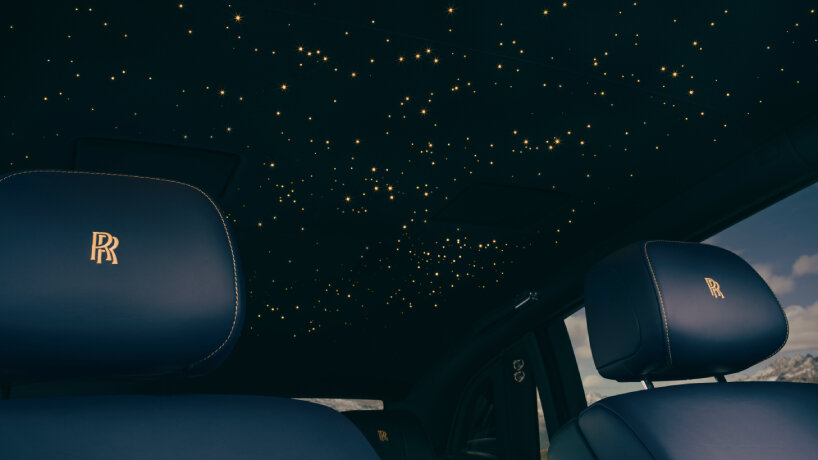
719 ‘stars’ glow, surrounded by eight ‘shooting stars’ that are all individually placed by hand

Rosalind Fox Solomon’s Introspective Portrait of Her Own Ageing Body – AnOther Magazine
Rosalind Fox Solomon’s Introspective Portrait of Her Own Ageing Body AnOther Magazine
Source link

After UArts collapse, Pig Iron Theatre finds new home at Rowan
From Philly and the Pa. suburbs to South Jersey and Delaware, what would you like WHYY News to cover? Let us know!
The Pig Iron School for Advanced Performance Training will become part of Rowan University in New Jersey, almost four months after it was cast adrift following the sudden closure of the University of the Arts in Philadelphia.
Pig Iron Theatre cofounder Gabriel Quinn Bauriedel said Rowan will be the Pig Iron School’s forever home.
“I believe absolutely that this is phase three of the school,” he said. “Phase one we did it on our own. Phase two we did it with UArts. Phase three, the final phase, is with these gentle, kind, wise folks at Rowan.”
The Pig Iron Theatre Company is widely known for its experimental and devised theater techniques and created a school to train students at the master’s degree level. But the degree program requires an institutional partner, which is now Rowan.
Rowan University has three campuses in South Jersey, with the Department of Theater and Dance based on the main campus in Glassboro, New Jersey. Pig Iron will remain in Philadelphia, with students studying at the school’s studio in Philadelphia’s Kensington neighborhood.
“It’s really a unique opportunity to have this exemplary, unique MFA that’s already in existence,” said Rick Dammers, dean of the College of Performing Arts at Rowan University. “They have their own facilities. They have their own students already. It’s a lot easier to incorporate a pre-existing program than to start one from scratch. And the reputation of the program, too, is exciting.”
The return of Hope of the States: ‘There will be no tantrums. I’m a grown man now’ | Pop and rock
“Let the healing begin,” says Sam Herlihy the moment I turn on my tape recorder. He’s joking, but not entirely. In December, Herlihy’s band Hope of the States will reform for a series of shows – the first time they have played together live for more than 18 years. The gigs, along with a new EP, mark 20 years since the group’s debut album The Lost Riots bucked the early-00s trend for short, spiky indie songs in favour of epic soundscapes that incorporated military drums, Morricone-esque strings and portentous lyrics about the perils of nationalism. When Hope of the States split in 2006, shortly after playing the Reading and Leeds festival, Herlihy declared that the band were cursed. Certainly, their short tenure had more than its share of misfortune and tragedy.
Herlihy was the person who walked into the studio late one night, during the recording of The Lost Riots, to find his friend and bandmate Jimmi Lawrence had killed himself. These days, such a terrible event would involve interventions – therapy, a lengthy career pause. But three weeks after Lawrence died, Hope of the States were back in the studio, finishing their album before touring the world.
“I don’t blame the label,” says Herlihy today over a pint of Guinness. We are in a beer garden in Margate, Kent, where the band are recording four new songs. “It was a different time. People didn’t talk about mental health. And going back into the studio was what we said we wanted.”
In one sense, at least on the surface, Hope of the States managed to keep going after Lawrence’s death. They finished The Lost Riots and recorded a follow-up called Left, as well as playing gigs in the US and Japan. But in another sense, they never really recovered. When Herlihy recounts his time in the band it reads like a series of stressful incidents. He remembers being about to go on stage at Glastonbury festival and realising the military jackets that the band always wore during performances had been locked in their tour van. Their tour manager had done a runner with their money and they had to smash the windows to get inside. He recalls guitar strings constantly breaking while recording Later … With Jools Holland, and Top of the Pops making them play live on unfamiliar instruments (“We were drunk … It was a disaster”). There were temper tantrums and meltdowns whenever things went wrong. “God, I did not deal with that stuff well,” he says. “But I was grieving, I was a kid … I shouldn’t have behaved like that, but it felt like it all mattered so much.”
It’s no wonder, then, that Herlihy had doubts about bringing Hope of the States back. But when his wife pointed out the 20th anniversary date, and music industry friends expressed enthusiasm for a reunion, he reached out and found the band were keen to make it happen. Herlihy says he “felt like I was going to have a panic attack” when he walked back into a rehearsal room. Then they staggered through some old songs and he realised the magic was still there. “It’s not quite muscle memory but emotional memory,” he says. “You suddenly feel the same things you felt then, even though you’re 20 years older.” Adding to this emotional wallop is the fact the producer of their new EP is Jolyon Thomas, son of the late Ken Thomas who produced The Lost Riots.
Sonically similar to the grandeur of their debut album (one song even reaches the 12-minute mark), the new songs try to capture that original youthful passion when everything – especially music and film – felt vitally important. Old friends from high school are name-checked; old times drinking stolen booze in a park are glorified.
I first met Herlihy and his bandmates back when they were releasing early singles such as Black Dollar Bills and Enemies/Friends. They were great company and talked a good game. “I think I was a cocky gobshite, really,” laughs Herlihy. But they also seemed hyper aware of being outsiders in a scene that was spawning the more commercial likes of Franz Ferdinand and the Killers. How could they compete? Their live shows involved doomy video projections and their songs were inspired by Godspeed You! Black Emperor, Mogwai and Naomi Klein’s No Logo. Somewhat implausibly by today’s standards, Sony offered them a £1m record deal anyway – which they enjoyed spending.
“Our budget for promo CDs would be a grand,” says Herlihy. “But we’d be like: ‘No, we want to do them in hand-sewn sleeves made out of flags that are half burnt!’ So a bunch of Sony interns would be sewing these flags and burning them with little kitchen flamers and it would cost 10 times the budget. But we’d be like: ‘Wicked! Look at these things, they’re cool!’”
Over time, the band drifted away from wild creative whims. Things became a slog, and they started to question why they were still doing it. When the band were offered the opportunity to record a third album, they declined. It was no longer fun. Partly, says Herlihy, because of the way they were treated by other bands following Lawrence’s death. “We wanted to have drinks with them at festivals and hang out,” he says. “But it was like we were damaged goods. Everyone’s looking for you to be some kind of grief-stricken doomlord, but I didn’t feel like I was.”
The complexity of grief was starting to entangle the band. They were devastated, of course, but they also realised they were living out their dreams. “It was difficult to put across your best side because then I would feel a bit guilty. I felt like people expected me to just want to sit there and cry. The whole situation was messy and horrible.”
It was after the band had split that things caught up with Herlihy. For more than a decade he was haunted by comments from friends of Lawrence who had said that he was to blame – there seemed to be an implication that, as the leader of the band, he was the one responsible for Lawrence’s welfare. “I was the last person to see him and I was the one who found him,” he says. “So you just think, oh, this is my fault.” It was only when he eventually saw a therapist that he realised he was suffering from PTSD. He began work resolving the conflicting anger and guilt he still had around Lawrence’s death. These days he remembers his friend from a much healthier perspective.
“I think about him now as a mate more than anything else. The way it happens is, ‘Oh, he’d have loved that television show’, or ‘I wish he could hear that album.’ Because we weren’t just in a band together – we got drunk together, we hung out and we talked about the Pogues. So yeah, it would be cool to have him on stage playing guitar with us, but that’s not the main way I think about Jimmi.”
after newsletter promotion
Before reaching out to a therapist, Herlihy’s life had taken a rather bleak turn. He had assumed he would just start a new band after Hope of the States and get another record deal. “Then, when that didn’t happen, I thought: ‘Oh shit.’” He found a job in Starbucks, and still winces when remembering the encounters he had there.
“Maybe once every couple of weeks, you’d hand somebody their coffee and they’d do a double take. And I’d be like: oh God, I know what’s coming. They’d have this sort of disappointment on their face and they’d say: ‘Aren’t you Sam from …’ and I’d say: ‘Yeah, you know, bills to pay!’ It was quite brutal. Looking back it’s like: why the fuck didn’t I just take an office job? My wife says I probably did it as some sort of self-flagellatory thing.”
Herlihy bounced back, though, opening the fine dining restaurant Pidgin in Hackney, east London, along with a bunch of other eateries. Other members of the band also seem to have gone into various foodie jobs – from restaurants and microbreweries to natural wine bars in Copenhagen. Herlihy has three kids; his eldest is now around the age he was when his band first took off. He’s thrilled that they will get a chance to see the band perform.
And this time if any strings break or amps blow up there will be no tantrums. “Hopefully not. I’m a grown man now,” he laughs. “There’s no reason to do it unless it’s joyful. The minute it isn’t, then I’ll leg it.”
These are the words of a happier, more stable Herlihy. So is he really ready to risk unleashing the band’s curse again? After our interview ends, I stand to leave and realise that a bottle of water has leaked into my bag, soaking the contents, which includes a battery pack.
Sam clocks it and, with a grin, imagines a future conversation he might be having. “Yeah, well we were all set to get this piece published in the Guardian … but the journalist electrocuted himself on the way home so it never happened.”
Well, if you’re reading this then maybe the curse has been lifted.
Hope of the States release Long Waits in A&E digitally on 1 November. The vinyl edition will be available as the band tour 4 to 7 December; tour starts Manchester.
In the UK and Ireland, Samaritans can be contacted on freephone 116 123, or email jo@samaritans.org or jo@samaritans.ie. In the US, you can call or text the National Suicide Prevention Lifeline on 988, chat on 988lifeline.org, or text HOME to 741741 to connect with a crisis counsellor. In Australia, the crisis support service Lifeline is 13 11 14. Other international helplines can be found at befrienders.org
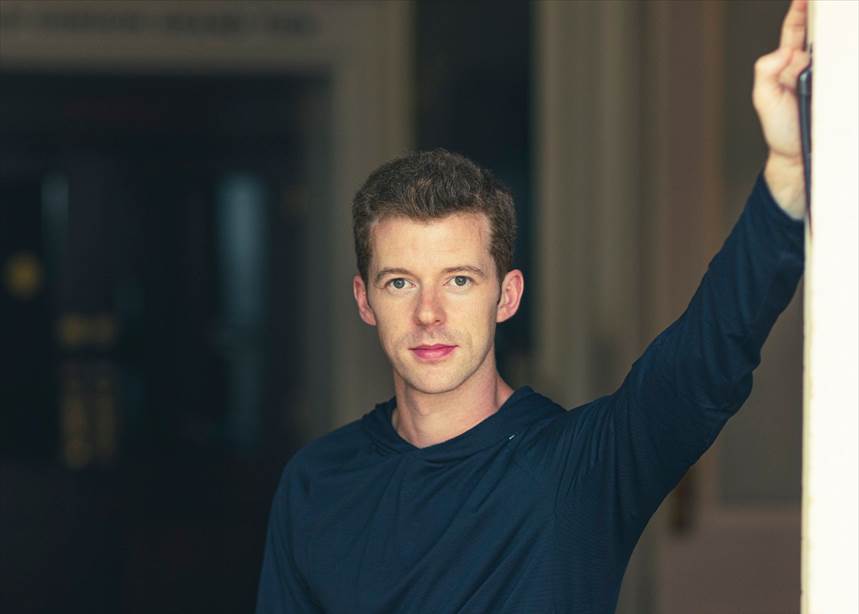
ROYAL BALLET DANCER KEVIN EMERTON ANNOUNCED AS BALLET TEACHER AT THE ROYAL BALLET SCHOOL
- Kevin is an alumnus of the School and First Artist with The Royal Ballet
- He will leave the Company and join the Upper School artistic faculty in January
The Royal Ballet School is delighted to announce that Kevin Emerton, dancer of The Royal Ballet and alumnus of the School, will join the Upper School in January as Pre-professional Year Ballet Teacher.
This appointment marks a significant addition to the School’s artistic faculty as Kevin transitions from an outstanding 17-year performance career with The Royal Ballet to mentoring and nurturing the next generation of dancers.
Kevin trained at Elmhurst Ballet School before joining The Royal Ballet School’s Upper School. In 2007, Kevin graduated into The Royal Ballet and was promoted to First Artist in 2014.
Kevin brings a wealth of expertise to The Royal Ballet School as an artist and dance teacher. In 2022, he completed The Royal Ballet School’s two-year Diploma of Dance Teaching course. He has since taught as a Guest Teacher with The Royal Ballet School and Company and other international institutions, balancing this with his performance career.
His understanding of the demands of classical ballet at the highest level, combined with his first-hand experience of The Royal Ballet’s repertoire, and The Royal Ballet School’s holistic training ethos, make him uniquely equipped to mentor students at the final stages of their training to success.
Iain Mackay, Artistic Director of The Royal Ballet School, said:
‘We are delighted to welcome Kevin back to The Royal Ballet School. Kevin brings valuable experience of The Royal Ballet’s repertoire and the distinctive English style. His connection with the School, both as a student and graduate of our Diploma of Dance Teaching course, makes him the ideal mentor for our Pre-professional Year students. I know that Kevin’s skill and passion for teaching will inspire and guide them as they prepare to take their first professional steps.’
Kevin Emerton said of his appointment:
‘I am thrilled to be returning to The Royal Ballet School as a teacher. I am truly looking forward to guiding, nurturing and collaborating with the next generation of young dancers.’
This announcement follows the news that Stuart Cassidy will leave the School in January to return to The Royal Ballet as Répétiteur to the Principal Artists.
While with The Royal Ballet, Kevin has performed in a diverse array of the company’s heritage, classical and contemporary repertoire. He has also created roles in new productions for The Royal Ballet with renowned choreographers, including Christopher Wheeldon, Wayne McGregor, Crystal Pite and Liam Scarlett as well as performing many revivals of works by Frederick Ashton, Kenneth MacMillan and George Balanchine.

Architecture of Cities: Peripheral Journeys – CounterPunch
Architecture of Cities: Peripheral Journeys CounterPunch
Source link

The Paris Review – Safe camp
Photograph courtesy of the author.
I was still but tried, in a burst it’s all lit up by.
In the quiet permission
I took my unit of heart and wondered if it was enough.
Can’t in cannot, the backwater was canceled
So a quiet commercial
Could play inside instead. An artifact
Gathered and became immobile, and even so
Changed year to year until its recognition fell to wind itself.
I felt myself. I felt myself inhabiting it so I felt myself. In everything
To see a circular tape, again and
Again I see it, determining the summer was suddenness
Netting how images can melt, can melt
the video lengthening some dream
Because exhaust is unmanageable and so released. I push in the tape,
Iridescent and wet. I’m soggy and failing at no end in sight
And just figures on their way, where are they going,
What is their position. Let me place you inside the deer
To keep you warm.
You can read two more poems by Sara Gilmore, “Mad as only an angel can be” and “Knowing constraint” in the new Fall issue of The Paris Review, no. 249. You can also read Gilmore’s thoughts on writing “Safe camp” here on the Daily.
Sara Gilmore is a poet and translator. She teaches at the University of Iowa and works as a phlebotomist.
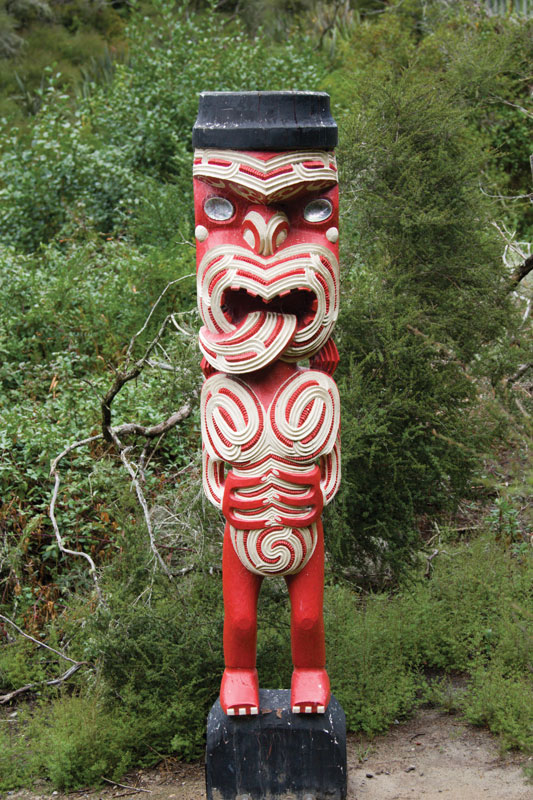
The Growth and Importance of Creativity Around the World
By Dan B. Shaw
Where in the world does creativity thrive the most? Canva looked at four countries selected as some of the “most creative” in the latest ranking of the Global Creativity Index and found that the US, UK, Australia, and New Zealand contributed around $1 billion in total last year to their respective governmental art programs, which seek to inspire and encourage art and creativity that in turn further build their economies.
The data shows that the UK has invested over 300% more government funding of their central arts programs than the US and has increased funding by 11% over the past 10 years. Australia has increased investment into their arts programs by 18% and New Zealand by 33% while the US remains the same as it was 10 years ago with no increase in funding.
This means that federal funding in the US is just $0.47 per capita compared to the UK which is $9.46 per capita, Australia which is $5.2 per capita, and New Zealand which is $5.8 per capita.
However, this has not affected the revenue they have witnessed in their creative industries, with the US creative industry worth a massive $804 billion, followed by the UK at $130.6 billion and Australia and New Zealand at $58.7 billion and $2.4 billion respectively.
Canva also investigated the number of creative art degrees completed in the four countries over the past 10 years and found:
- The number of completed visual and performing arts degrees in the US has risen by 7% since 2006-07
- The number of completed creative arts & design degrees in the UK has risen by 17% over the past 10 years
- The number of completed creative arts degrees in Australia has risen by 21% over the past 10 years
- The number of completed creative arts degrees in New Zealand has dropped by 0.5% since 2009.
These increases mask the threats to creative industries and creativity across the world. Terry Flew, Professor of Creative Industry Studies, Queensland University of Technology in Brisbane, Australia, says, “If there is a global economic downturn, this will disproportionately affect the creative industries. The challenge of digitalization is strong, too, but I also think that imagination exists to make this work, if digital platforms can be convinced (or compelled if required) to be supportive.”
He also cited policy indifference as one of the largest threats to creative industries and creativity across the world at present: “The resurgence of populist nationalism is also an issue, since cultural and creative exports tend to be connected with a more cosmopolitan mindset and openness to cultures from around the globe. They also face existential threats from the power of digital platforms, and their capacity to control distribution to the detriment of content creators.”

But despite challenges, countries can still thrive, and even without the hefty funding as in the US and the UK. Some regions cannot afford to invest into the creative industries or have various other demanding priorities to address. Professor Flew speaks about the bottom-up nature of some regions, such as Nollywood in Nigeria: “Lack of development is also often tied to problems in state capacity, such as corruption or excessive military spending, which in turn inhibits development. In these regions, CCI development is often bottom-up in nature, for example Nollywood cinema in Nigeria – a key challenge is to “formalize” these often informal sectors while retaining their market dynamism.”
Developing creative regions such as Latin America and Africa does seem to be showing some strong positive movements. The British Council’s report on the Brazilian Creative Economy found that there are one million creative jobs in Brazil and 200,000 creative businesses that account for 2.64% of its GDP—an almost 70% increase in the last decade. This is growing at an annual rate of 4.6% per year–more than double the growth of Brazilian economy overall. Fashion is the leading creative industry, followed by music, film and online media, which are all growing in Brazil. Meanwhile, Africa has one of the youngest populations in the world, and the growth of digital and mobile technology and systems means there’s many opportunities for progress powered by creative minds.

As Professor Flew mentions, Nigeria’s booming film industry, named Nollywood, has become the second largest film industry in the world, producing around 1,500 films every year–definitely an impressive number. Over a million people are employed in the industry, making it the country’s largest employer after agriculture, while also making close to $600 million annually, highlighting the wealth of creativity and demand for consuming it across the continent.
Indeed, the worldwide streaming service Netflix, worth billions of dollars, and a juggernaut of creativity and distribution online, has acquired films made in Nollywood and has even been inspired by Africa. They have recently announced the release date of “Queen Sono”, an spy show which will ”showcase an African aesthetic onscreen that the rest of the world has never had a chance to see… exploring the origins of contemporary trends through African eyes and the breadth of ideas that this vast continent has to offer,” according to Dorothy Ghettuba, head of International Originals for Africa at Netflix.

With African art and creativity clearly in high demand, I spoke to the founder of Afripedia, a website where African creatives worldwide can collaborate, create opportunities and inspire the next generation. “While producing the Afripedia series, it became evident that there was a significant group of talents across the continent who had remained underrepresented in the global creative industry,” explains Teddy Goitom, who co-founded the Afripedia project alongside Senay Berha. “Our aim is for Afripedia to serve as the premier search engine to find the best creative talents of African descent, a platform for creative collaborations across Africa and her diaspora, and a global employment pool for future top talents,” says Goitom.
Creativity drives success in every country that supports it. Whether it comes from government sources or independent organisations, investing in arts and culture has a significant beneficial impact on countries as a whole. And with this comes the growth, innovation and fresh ideas that will shape the global society of the future.
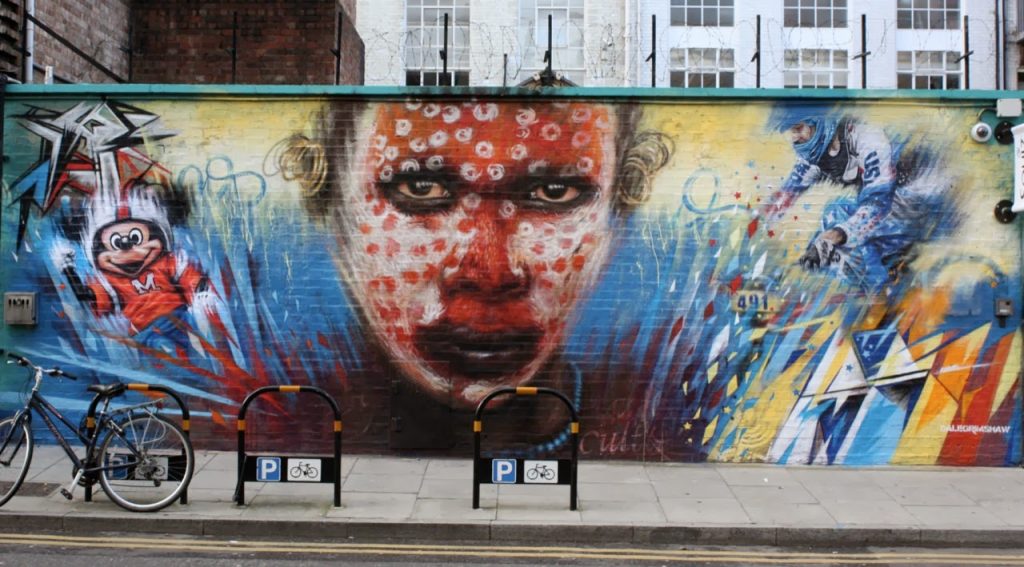
About Dan B. Shaw
With many family members working inside the world of art as designers, students and graffiti artists, Shaw has been inspired by artists and creativity his whole life, and remains an interested observer of all things art, using inspiration from all around him to draw on in his current path of digital and marketing.
Canva is a graphic-design and publishing tool for designers and non-designer alike. Canva seeks to inspire creations for use in a wide variety of industries. As advocates for creativity and innovation all over the world, Canva conducted this research to explore, understand, and highlight how important the creative industry is for people everywhere, and what more can be done to open up the doors of creativity for aspiring creatives globally.

Fabien Cappello Crafts a Colorful Mosaic of Collaborations
Sometimes, inspiration strikes in the most unexpected places. For designer Fabien Cappello, it was a local newspaper called Mural in Guadalajara that sparked a collaboration and creative journey with a nearby mosaic workshop. Cappello, who has called Mexico home since 2016, stumbled upon a news story about a mural featuring an eighteenth-century bishop, but it wasn’t the historical figure that caught his eye – it was the craftsmanship of the intricate mosaic. That discovery led him to Taller de Mosáico Artístico, a local workshop that produced the mural and was serendipitously situated just down the street from his studio. From there, Cappello embarked on a collaboration that blends his love for bold patterns and vibrant colors with the workshop’s meticulous tile-making techniques, which would eventually lead to his exhibition, “On se rejoint à la villa!” at Villa Noailles in Hyères, France.
With Byzantium and Burle Marx influences, Cappello and Taller de Mosáico Artístico created a series of gem-colored surface designs featuring undulating waves and circles, geometric grids, and a color palette of coral, navy, ochre, and robin’s egg blue that work together in perfect visual harmony. These mosaics were then flat-packed, shipped from Guadalajara to Hyères, and turned into their final forms as tables using simple pine frames for the exhibition.
Like his relationship with Taller de Mosáico Artístico, Cappello’s design philosophy is centered around tapping into local, often-overlooked industries – a principle showcased throughout the exhibition. Rather than collaborating with Mexico’s iconic artisans like weavers or ceramicists, he seeks out lesser-known cottage industries that fuel urban economies but often fly under the design radar. Take, for example, a family tinplate workshop that normally produces cake molds and watering cans, now tasked to create vases and lampshades. Or a company in Lerma that specializes in upholstery for bus seats, enlisted to produce the eye-catching, acid-bright polyester prints for Cappello’s seating. His pieces don’t just reflect their origin stories – they create new ones, shaping how we think about design in the most unexpected ways.
A standout in this element of surprise is the Toto lamp, designed for Hem. At first glance, the design nods to the archetypal lamp – angled shade, chunky base – but, of course, Cappello’s designs are anything but traditional. Covered entirely in textiles, the Toto lamp blurs the line between form and function, creating a tactile experience that feels fresh and unexpected. The uniform material, combined with vivid hues and graphic patterns, gives the lamp a cartoonish, almost animated presence. And while the Toto Large version makes a grand statement with its oversized scale, it remains physically light, making it an easy piece to move around. For those short on space, Toto Small or Toto Medium variants brings all the charm in a compact, tidy form, perfect for adding a playful pop to any corner.
To learn more about the Fabien Cappello’s “On se rejoint à la villa!” exhibition or his new Toto lamps for Hem, visit hem.com.
Photography by Luc Bertrand.



















